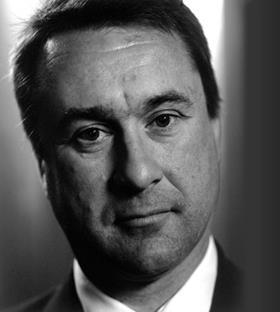Morgan Sindall boss says heŌĆÖs focused on ŌĆśtighterŌĆÖ implementation of the firmŌĆÖs strategy as it post its full year results

Morgan Sindall expects to make up to ┬Ż15m in annual savings through its restructure, which saw the business close a number of regional offices last year and reshape its business around four regions.
Speaking to ║├╔½Ž╚╔·TV after the contractor announced its results for the year to 31 December 2012, chief executive John Morgan said the restructure, which cost the business ┬Ż10m in redundancy payments and property costs, would lead to ┬Ż13-15m in annualised savings.
He said the restructure was a result of the fact that ŌĆ£life is tougher and we needed to make those savings in order to continue with similar profitsŌĆØ.
He said it had not only brought about a reduction in costs, but meant the firm was also now a ŌĆ£more flexible business that was able to move with market demandsŌĆØ.
He said the firm had no immediate plans to engage in further restructuring. ŌĆ£But of course like all businesses weŌĆÖre always keeping an eye on whatŌĆÖs happening in the market - businesses get bigger and smaller depending on the amount of work available,ŌĆØ he added.
Morgan said he was broadly pleased with the results, with the firm reporting a fall in pre-tax profit to ┬Ż34.2m from ┬Ż40m the year before. It also reported an 8% drop in revenue to ┬Ż2bn from ┬Ż2.2bn in 2011.
The construction and infrastructure arm reported an 8% fall in revenue to ┬Ż1.2bn over the period. But it also said its margin had remained steady at 1.7% over the last two years.
The firmŌĆÖs fit out arm held up reasonably well with revenue falling just 3% to ┬Ż427m. But the affordable housing business saw revenue fall 17% to ┬Ż386m with margins falling from 1.5% to 1.3%.
However, its urban regeneration arm reported a 9% rise in revenue to ┬Ż62m over the period. The firm said it expected returns on its investment in regeneration to grow in 2014
Morgan said the performance of the affordable housing arm was the main disappointment in the results, which he said the firm wanted to improve by focusing on large mixed-tenure schemes.
He said he expected no significant upturn in the construction margin of 1.7% this year, but expected margins in the fit-out business and the affordable housing arms to improve.
ŌĆ£The construction margins are more likely to worsen than get better in 2013. I donŌĆÖt think it will go much lower but I think there are pressures to stop it from getting better,ŌĆØ he said.
He said it was ŌĆ£comfortingŌĆØ that the firmŌĆÖs order book of ┬Ż3.1bn had had only dropped marginally from the ┬Ż3.4bn the previous year, given the market was getting smaller.
Morgan, who returned to the role of chief executive last November, said he was enjoying the position. He said the change, which saw chief executive Paul Smith depart the business, was not about a changing the firmŌĆÖs strategy, but rather ŌĆ£being much tighter on implementing the strategyŌĆØ. ŌĆ£IŌĆÖm not flying high, IŌĆÖm rolling my sleeves up,ŌĆØ he said.
He added: ŌĆ£The biggest thing IŌĆÖm looking to do is weŌĆÖve got lots and lots of businesses where, on their own, they compete very nicely in their markets.
ŌĆ£But by pulling two or three of them together for certain pitches we can actually punch well above our weight and win jobs where other competitors canŌĆÖt put forward such strong propositions.ŌĆØ
He added that the firm was being far more selective in its bidding as it reduces its exposure to straight contracting and focuses more on infrastructure, regeneration, affordable housing. ŌĆ£Our contracting turnover has fallen and we expect that to probably remain about the same next year,ŌĆØ he said.
ŌĆ£ItŌĆÖs important to understand what the customer really needs and for us to be clear that we have a competitive advantage in that job and weŌĆÖve got what the customer needs.
ŌĆ£Because itŌĆÖs just a whole lot of people pricing and the customer is just looking for the cheapest price and doesnŌĆÖt mind who does it then thatŌĆÖs not for us.ŌĆØ




























No comments yet